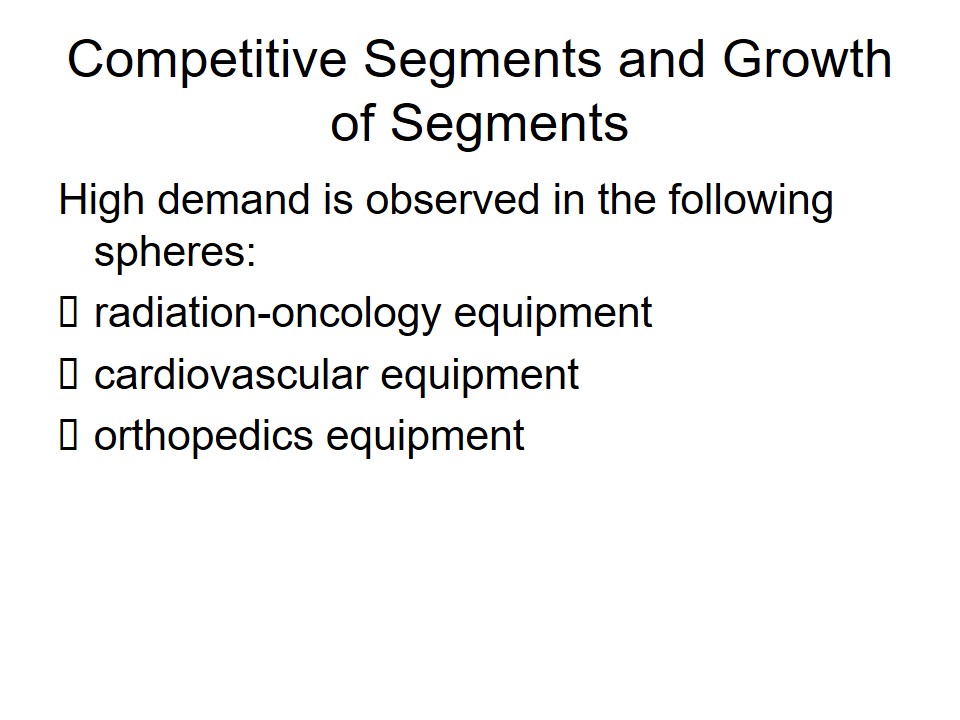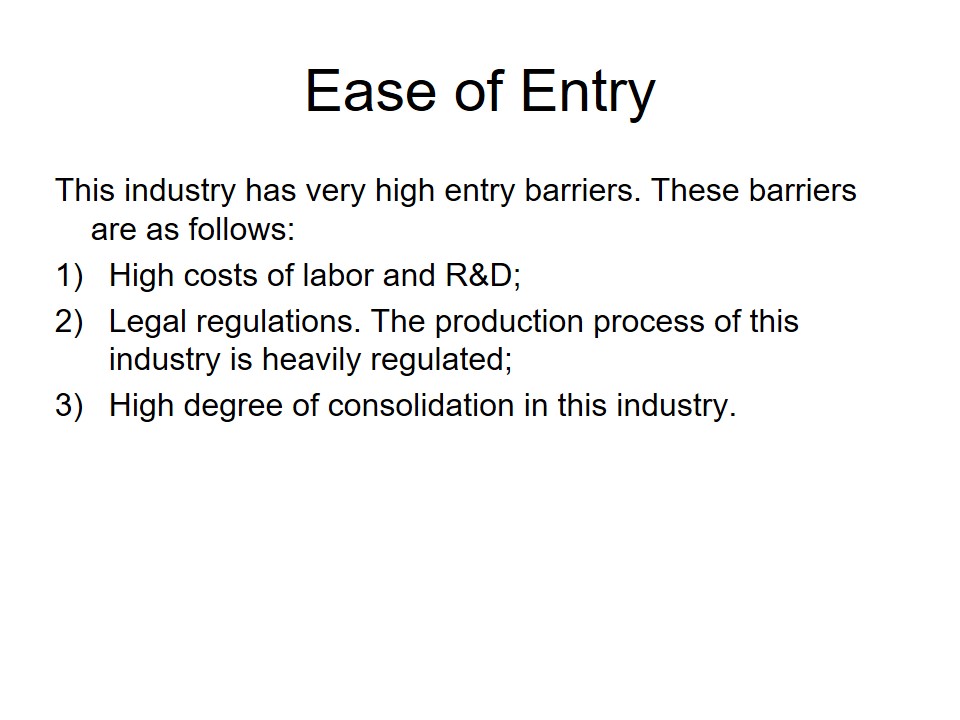Industry Growth
- fastest-growing markets.
- increased sales (16%).
- S&P Health Care index grew 9.5% by the end of 2010.
- overall sector increase by 3.2%.
- S&P 1500 Composite Stock index raised by 14.2%.
Medical appliances and supplies industry is raising in spite of the fact that the healthcare reform caused some difficulties and hospitals are unable o buy high-cost equipment. Looking at the industry, it is possible to notice rapid growth which is currently observed. This growth is also provided by the increase of relying on international sales and emerging markets (Seligman n.p.)

Competitive Segments and Growth of Segments
High demand is observed in the following spheres:
- radiation-oncology equipment.
- cardiovascular equipment.
- orthopedics equipment.
Looking at the industry segment, it is important to stress on cardiovascular, radiation-oncology and orthopedics equipment sales raise. These products are in higher demand then others, therefore, the hospitals are looking for the best prices (Seligman n.p.). In spite of the fact hat the hospitals are searching for lower prices, they investment in innovation technologies remain an important issue. There are no that many competitive segments, but the competition within a segment is severe. Therefore, XIENCE DES and PROMUS are two highly competitive companies in the cardiovascular equipment segment (Seligman n.p.).

Vertical Integration
There is a trend toward vertical integration in this industry. In particular larger companies strive to strive to acquire the intermediaries which manufacture some of the parts necessary for their products. The main goals for this backward integration are as follows:
- Improved production capacity;
- Decreased cost of production;
- Ability to take control over the supplier.
There is a marked tendency toward backward integration in this industry (IBISWorld, unpaged). Such alliances enable the companies to better control the manufacturing process and ensure the highest quality of products. This strategy is also aimed at decreasing the bargaining power of suppliers.

Technological Change
Technological change can be observed in every segment of this industry. Technological innovation ensures the following benefits:
- Competitive advantages over rivals, especially if we speak about break-through technologies that have been patented by the companies.
- Decreased costs of production which can be insured by the use of synthetic materials (IbisWorld, unpaged).
- Increased volume of production.
For this industry technological innovation is the key to the sustainability of a company. This industry is closely related to such areas as engineering, nanotechnology, bioengineering, and so forth (IBISWorld unpaged). It should also be noted that there are some segments in which technological innovation is particularly important, namely, dental equipment, cardiovascular devices, and radiation equipment. In part, it can be explained by the fact that these markets are particularly active. These companies target people with common and chronic diseases, and in this case, the investment in technology is particularly cost-effective.

Ease of Entry
This industry has very high entry barriers. These barriers are as follows:
- High costs of labor and R&D;
- Legal regulations. The production process of this industry is heavily regulated;
- High degree of consolidation in this industry.
These obstacles can prevent new companies from entering this market.

The Intensity of Competition in Industry Segments
- Cardiovascular Devices – High;
- Spinal Devices – High;
- Diabetes Devices – Moderate;
- Surgical Technologies- Moderate;
- Radiation and Oncology Equipment – High.
The main success factors in competition are technological innovation, the safety and quality of the product and performance. The analysts also argue that in the future, price differentiation will also be important for sustaining competitive advantage (IBISWorld unpaged). This change can be explained by the policies of cost-containment implemented by the government. This industry gradually becomes more consolidated. For instance, one can mention General Electric, Medtronic, or St. Jude Medical, Inc which control more 29 percent of the total market (BISWorld unpaged). Finally, this is the type of industry with very high exit barriers. The thing is that these organizations make heavy investments into capital equipment, and any market failure can result into considerable losses.

Supplier and Buyer Segment
- The main buyers are medical institutions and individual customers. They can not consolidated. The buyers have some switching costs, and their bargaining power is medium.
- The suppliers are not consolidated. They are usually vertically integrated in the structure of main manufacturing companies. These companies usually patent their products. Their bargaining power is medium.
This is the market in which the manufacturers of the end product can dictate their terms to the suppliers and buyers. There are several reasons for it. The components provided by the suppliers are usually not differentiated, and they can be substituted. In turn, the customers are very diverse and not consolidated.

Industry Favorableness
The industry Favorableness can be summarized with the help of Porter’s Model of Five Forces:
- The Intensity of Competition – High;
- The Bargaining Power of Buyers – Medium;
- The threat of substitute products – High;
- The Bargaining Power of Supplies – Moderate;
- The Threat of New Entrants – Low;
This industry can suitable only for those organizations that have great technological capacity. Furthermore, this is the area which breakeven period is very high.

Works Cited
IbisWorld. Medical Instrument & Supply Manufacturing in the US. 2011. Web.
Seligman, Phillip M. “Healthcare: Products & Supplies.” Healthcare Equipment & Supplies Analyst. 2011. Web.